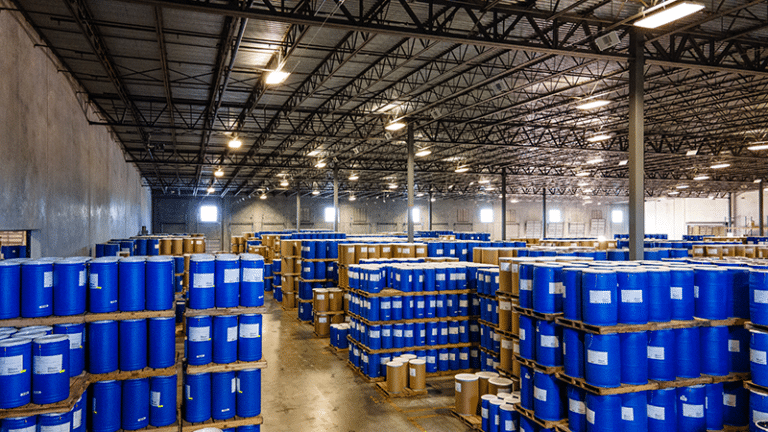Freight warehousing refers to the process of storing goods and materials in a large commercial building known as a warehouse.
The primary function of a freight warehouse is to receive, store, and distribute products efficiently and safely to the destination.
Freight warehouses have an essential role in the supply chain by acting as a hub for businesses to manage their inventory and meet customer demands.
Freight warehousing involves different activities, including:
- Receiving: Accepting goods from suppliers or manufacturers and recording their arrival.
- Storage: Placing goods in designated areas within the warehouse, often using pallets, racks, or shelves to maximize space and maintain organization.
- Inventory management: Tracking the quantity, location, and movement of goods within the warehouse to ensure accurate inventory control.
- Order picking: Retrieving goods from storage locations to fulfill customer orders.
- Packaging: Preparing products for shipment by securely packing them into boxes or containers.
- Shipping: Dispatching packaged orders to customers or other businesses through various transportation methods.
- Returns management: Processing and storing returned items from customers.
Warehousing has evolved over time with advancements in technology, automation, and warehouse management systems (WMS), leading to improved efficiency and accuracy in operations. ‘
Technologies such as artificial intelligence (AI) and robotics have helped warehouses streamline their processes as well as reduce labor cost, and increase productivity.
Types of Freight Warehouses
Public Warehouses
Public warehouses are owned and operated by third-party logistics providers (3PLs) and are available for use by any company that needs storage space. Public warehouses are typically located near transportation hubs, making them convenient for companies that need to move goods quickly.
They’re also helpful for companies that need short-term storage or that have varying storage needs.
Private Warehouses
Private warehouses are owned and operated by individual companies for their own use. They’re typically located near a company’s manufacturing facilities, making them convenient for storing raw materials and finished goods.
Private warehouses can be customized to meet a company’s specific needs and can provide greater control over inventory management.
Distribution Centers
Distribution centers are specialized warehouses designed to efficiently receive, store, and ship large volumes of goods.
They’re usually located near major urban centers and transportation hubs, making them convenient for companies that need to move goods to customers quickly.
They’re also useful for companies that need to manage complex supply chains and require advanced inventory management and tracking systems.
Importance of Freight Warehousing
Warehousing plays a vital role in ensuring that goods are available when and where they are needed. Some of the key benefits of warehousing include the following:
Better Inventory Management
Warehousing allows companies to better manage their inventory by providing a centralized location for storing and tracking goods. This can help companies avoid stockouts and overstocks, and can improve forecasting and planning.
Reduced Transportation Costs
Warehousing can help reduce transportation costs by allowing companies to take advantage of economies of scale. By consolidating shipments and using larger, more efficient transportation modes, companies can save money on transportation costs.
Improved Customer Service
Warehousing can also help improve customer service by providing faster and more reliable delivery times. By strategically locating warehouses near customers, companies can reduce transit times and improve delivery reliability.
Freight Warehousing Processes – Receiving, Storing, and Shipping
Warehousing involves several different processes, including receiving, storing, and shipping. Each plays a role in ensuring that goods are properly managed and moved through the supply chain.
Receiving
Receiving is the process of accepting goods into a warehouse. This process involves verifying the quantity and quality of the goods, inspecting them for damage or defects, and updating inventory records.
Receiving is a critical process, as any errors or discrepancies can lead to inventory inaccuracies and supply chain disruptions.
Storing
Storing is placing goods into a warehouse and organizing them for later use. This process involves selecting an appropriate storage location, determining the optimal storage conditions, and ensuring that goods are correctly labeled and tracked.
Storing is essential for maintaining inventory accuracy and for ensuring that goods are easily accessible when needed.
Shipping
Shipping is moving goods out of a warehouse and into the client. This process involves selecting an appropriate shipping method, preparing the goods for shipment, and updating inventory records.
Warehouse Layout and Design
Warehouse layout and design are important considerations for maximizing efficiency and minimizing costs. Some key factors to consider when designing a warehouse layout include:
Flow of Goods
This process involves making sure that goods are shipped safely before, during, and after the operation. This is accomplished through the use of conveyor systems, automated storage and retrieval systems, and other advanced technologies.
Space Utilization
Warehouse space should be utilized as efficiently as possible to minimize costs and maximize storage capacity.
Space utilization uses high-density storage systems, such as pallet racking and automated storage and retrieval systems, as well as the use of mezzanine levels and other innovative storage solutions.
Safety and Security
Warehouse design should also take into account safety and security considerations, such as the placement of fire exits, the use of security cameras and alarms, and the placement of emergency response equipment.
Warehousing Equipment – Forklifts, Pallet Jacks, and Conveyor
Warehousing equipment plays a crucial role in ensuring that goods are properly managed and moved through the supply chain. Some of the most common types of warehousing equipment include:
Forklifts
Forklifts are used to lift and move heavy loads, such as pallets of goods. Forklifts come in a variety of sizes and configurations and can be operated manually or with the use of advanced automation technologies.
Pallet Jacks
Pallet jacks are used to move pallets of goods around a warehouse. Pallet jacks are typically manually operated and are designed for use on flat, even surfaces.
Conveyors
Conveyor systems are used to move goods around a warehouse, typically over long distances. Conveyor systems can be used to transport goods between different areas of a warehouse or to move goods to and from loading docks.
Inventory Management in Warehouses
Effective inventory management is critical for ensuring that goods are available when and where they are needed. Some key strategies for inventory management in warehouses include:
Cycle Counting
Cycle counting involves regularly counting a small portion of the inventory to ensure that inventory records are accurate. This can help identify discrepancies and errors before they become larger problems.
Just-in-Time (JIT) Inventory Management
JIT inventory management involves ordering and receiving goods just in time for when they are needed rather than keeping large amounts of inventory on hand. This can help minimize inventory carrying costs and reduce the risk of overstocking.
Cross-Docking
Cross-docking involves moving goods directly from receiving to shipping without storing them in a warehouse. This can help reduce storage costs and improve delivery times.
Warehouse Safety and Security
Warehouse safety and security are critical considerations for ensuring that goods are properly managed and protected. Some key strategies for warehouse safety and security include:
Training and Education
Warehouse employees should be adequately trained and educated on safety and security best practices. This can help minimize the risk of accidents, injuries, and security breaches.
Regular Inspections
Warehouses should be regularly inspected for potential safety and security hazards, such as damaged equipment, blocked fire exits, and unauthorized access points.
Advanced Security Technologies
Advanced security technologies, such as biometric scanners, access control systems, and security cameras, help warehouses minimize the risk of theft and other security breaches.
Warehousing Technology – WMS, TMS, and RFID
Technology plays an increasingly important role in warehousing, helping companies to improve efficiency, accuracy, and visibility across the supply chain. Some of the most common types of warehousing technology include:
Warehouse Management Systems (WMS)
WMS software is used to manage and track inventory, orders, and shipments within a warehouse. WMS can help improve accuracy, reduce labor costs, and streamline warehouse operations.
Transportation Management Systems (TMS)
TMS software is used to manage and track shipments as they move through the supply chain. TMS can help optimize transportation routes, reduce transportation costs, and improve delivery times.
Radio Frequency Identification (RFID)
RFID technology uses radio waves to identify and track goods moving through the supply chain. RFID can help improve inventory accuracy, reduce labor costs, and improve supply chain visibility.
Future of Warehousing
Automation and Robotics
Automation and robotics are expected to play an increasingly important role in warehousing, helping to improve efficiency and accuracy while reducing labor costs.
Artificial Intelligence (AI)
AI technologies, such as machine learning and natural language processing, are expected to help improve forecasting and planning, as well as to optimize warehouse operations.
Sustainability and Environmental Responsibility
Warehouses will likely come under increasing pressure to adopt sustainable practices and reduce their environmental impact. This includes the use of renewable energy, the adoption of sustainable practices, and the reduction of carbon emissions.
Whether you are new to warehousing or simply looking to brush up on the fundamentals, we hope this guide has given you the knowledge and insights you need to get started.
Canal Cartage is one of the leading warehouses in Texas. Located in Houston, we provide secure warehouses for non-hazmat and palletized goods for our commercial customers.
If you are importing less-than-container (LCL) load shipments regularly, consolidating your freight can provide tremendous savings on your overall freight costs.
You can get a quote from us or give us a call at (713) 672-1779 today!



